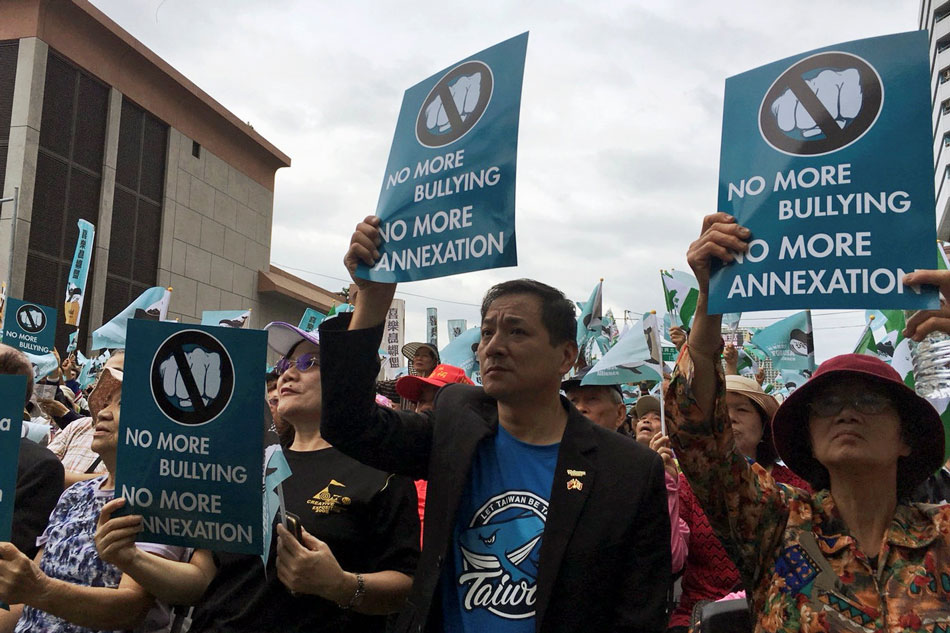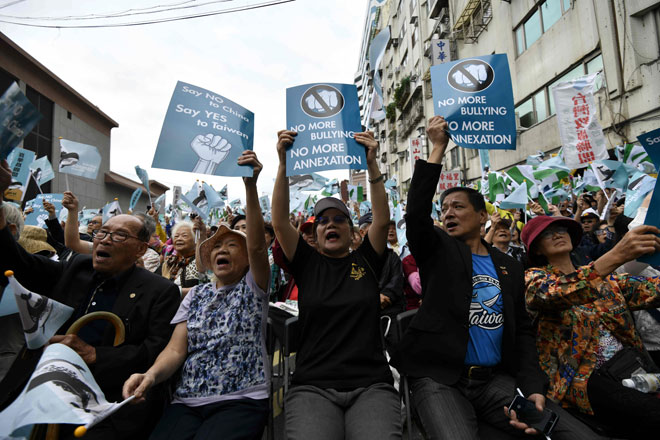Taiwan-China Relations: A Long and Complicated History
Taiwan’s history is deeply intertwined with that of mainland China. For centuries, Taiwan was considered a province of imperial China. In 1895, following the first Sino-Japanese war, Taiwan was ceded by China to Japan and became a Japanese colony. Japan invested heavily in infrastructure development during its 50 years of rule over Taiwan. After World War 2, Japan was defeated and relinquished control over Taiwan. In 1945, the nationalist Kuomintang (KMT) government led by Chiang Kai-shek took over administrative control of Taiwan from the Japanese and imposed martial law. The KMT viewed Taiwan as a province of the Republic of China (ROC). However, their rule over mainland China was being challenged by Mao Zedong’s communist forces.
The Chinese Civil War and the Rise of the PRC
By 1949, Mao’s communists had gained the upper hand in the Chinese Civil War and established the People’s Republic of China (PRC), forcing the retreating KMT government to flee to Taiwan. Over 2 million nationalist Chinese refugees fled to Taiwan with the KMT at this time. The ROC maintained its claim of being the sole legitimate government of all China, including Taiwan, while the PRC asserted its sovereignty over all Chinese territories including Taiwan. This standoff marked the division of China into two de facto governments - the ROC in Taiwan and the PRC in mainland China.

Taiwan Under Martial Law and Growing Separatism
The KMT instituted martial law in Taiwan that would last for nearly 4 decades until 1987. During this period of authoritarian rule, the native Taiwanese people had limited political representation and civil liberties. Resentment grew among the Taiwanese population against mainlander dominance of the political landscape. At the same time, the younger generation of Taiwanese who grew up under Japanese colonial rule began to develop a distinct Taiwanese identity. This led to the emergence of the Taiwan independence movement advocating for Taiwan’s right to self-determination.
Changing Dynamics and the Rise of Taiwan Independence
Democratic Reforms and the Rise of the DPP
In the 1980s, Taiwan began transitioning towards democracy with the end of martial law and several important reforms. The dominant KMT party faced its first serious political challenger in the Democratic Progressive Party (DPP), which advocated that Taiwan should be independent from China. The DPP drew much support from the native Taiwanese population that favoured identifying as Taiwanese rather than Chinese.
Increasing Tensions with the PRC
As Taiwan democratized, relations with mainland China remained complex. The PRC insisted on its “one China principle” that Taiwan is an inseparable part of China. It firmly opposed any moves towards Taiwan independence. In the 1990s, tensions rose as Taiwan moved towards developing a separate Taiwanese identity under President Lee Teng-hui of the KMT. The 1995-96 Taiwan Strait Missile Crisis saw China conduct missile tests near Taiwan in an attempt to influence its presidential elections.
The Election of Chen Shui-bian and Heightened Tensions
In 2000, Chen Shui-bian of the independence-leaning DPP was elected as Taiwan’s president, the first non-KMT president. This marked a major turning point. Chen took a more confrontational stance towards Beijing and refused to accept the “1992 Consensus” that there is only “one China.” Beijing responded by suspending dialogue. Under Chen, new legislation was passed to decrease economic dependence on China and move Taiwan closer to independence. He even proposed a new “Taiwan” constitution, which further angered Beijing. China ramped up military exercises and missile tests near Taiwan during this period of policy divergence.
Recent Developments and Prospects for Cross-Strait Relations
Pragmatic Approach Under Ma Ying-jeou
In 2008, KMT candidate Ma Ying-jeou was elected on a platform of improved ties with China. Ma embraced the pragmatic “1992 Consensus” and mounted a charm offensive towards Beijing. Under his leadership, Taiwan broadly shelved the independence agenda and instead prioritized economic exchanges with China. Over 150 agreements were signed boosting Chinese tourism, investments and trade with Taiwan. However, Taiwanese public opinion remained mixed about China, with concerns over sovereignty and over-reliance.
Continued U.S. Support But Changing Dynamics
The United States remains Taiwan’s main ally and arms supplier. However, it recognizes Beijing’s stance that there is “one China.” Its longstanding policy under the Taiwan Relations Act commits only to help Taiwan defend itself, without committing to outright military support. With China’s growing military might, some question if the U.S. can still credibly defend Taiwan. At the same time, Taiwan is developing its own asymmetric “porcupine” defenses as a deterrent. The Biden administration has signaled a continuation of prevailing U.S. policy towards the Taiwan issue.
Ongoing Sovereignty Issues Remain Contentious
Under the DPP’s Tsai Ing-wen government elected in 2016, Taiwan has moved to further differentiate its identity from China and pushed back against Chinese aggression and politicization of cross-strait relations. However, the PRC continues applying diplomatic and economic pressure to stress its stance that Taiwan is an inalienable part of China. Military escalations persist as well despite attempts to stabilize the relationship. How Taiwan’s sovereignty issues and relationship with mainland China will continue evolving remains uncertain, with independence advocates fervently pushing back against one-China frameworks. Peaceful resolution of the deep divisions remains complex with risks of conflict entrenched on both sides of the Taiwan Strait.
In summary, Taiwan’s history and current cross-strait relations involve longstanding unresolved issues rooted in its complex separation from mainland China after the Chinese civil war. Transitioning from authoritarianism to democracy further complicated matters by empowering Taiwanese identity and independence movements. While economic ties between Taiwan and China have grown significantly, sovereignty remains the most contentious sticking point with no easy resolution in sight. Continued U.S. involvement adds another layer to this high-stakes geopolitical issue.

 Life in Pune: An Insider's Perspective
Life in Pune: An Insider's Perspective